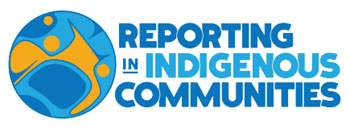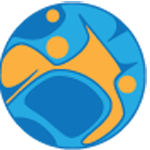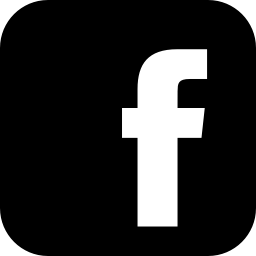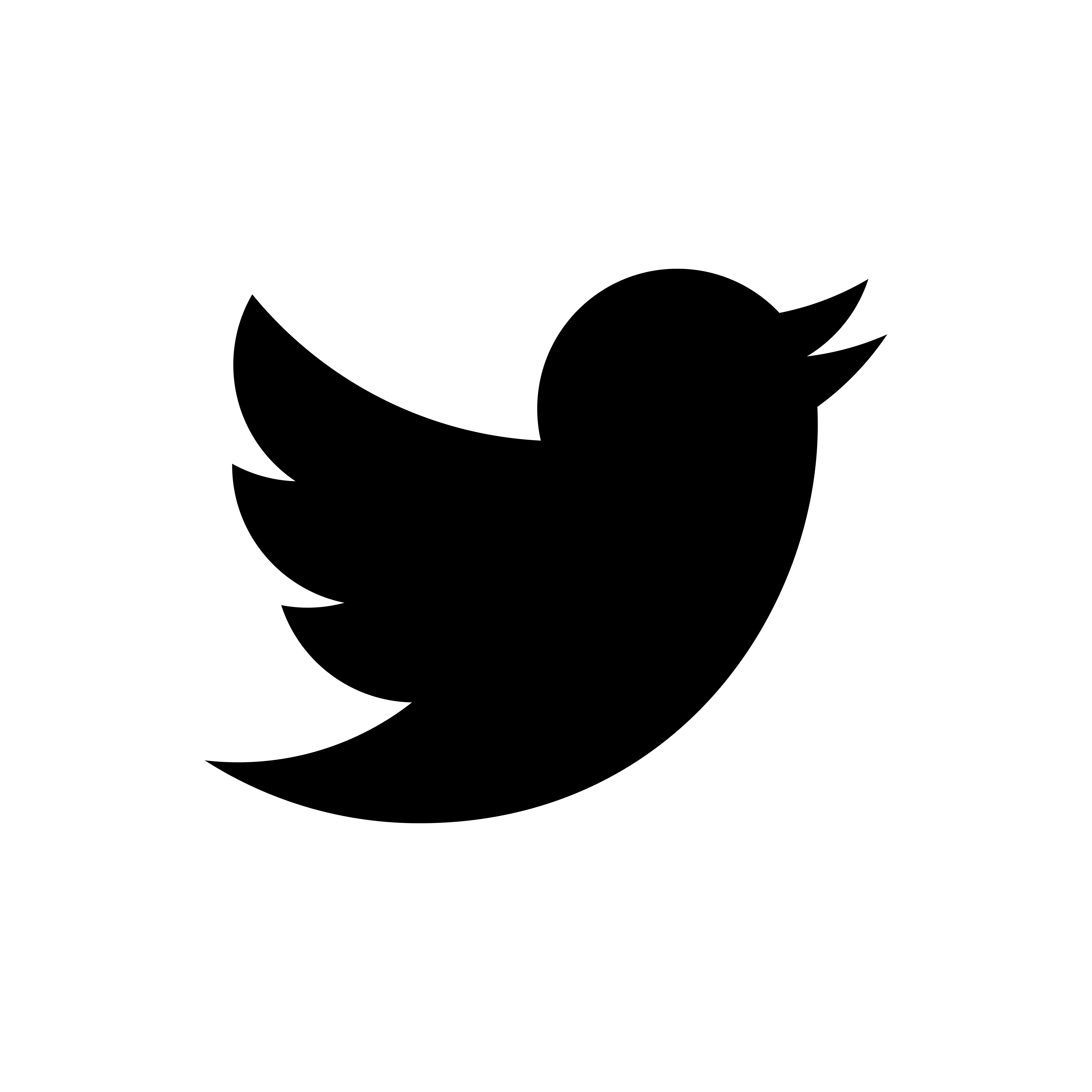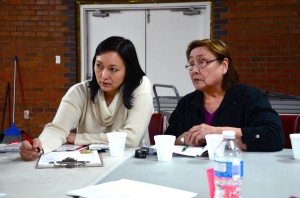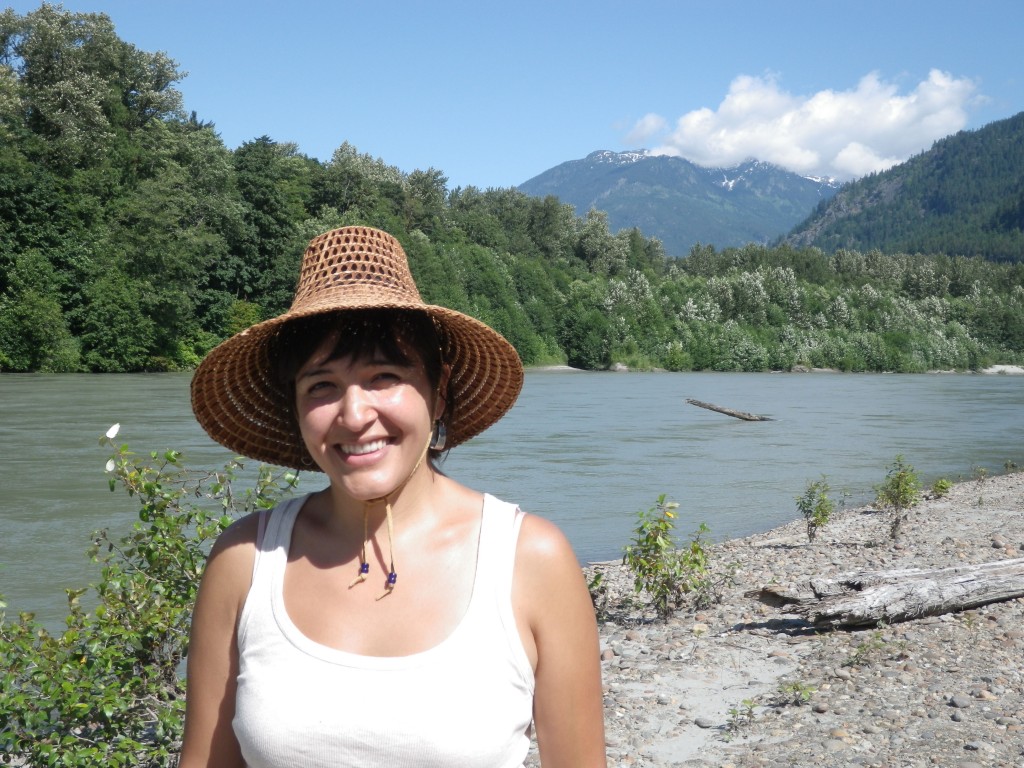27 Jun On Indigenous Peoples and Science Journalism: RIIC @ #WCSJ2013
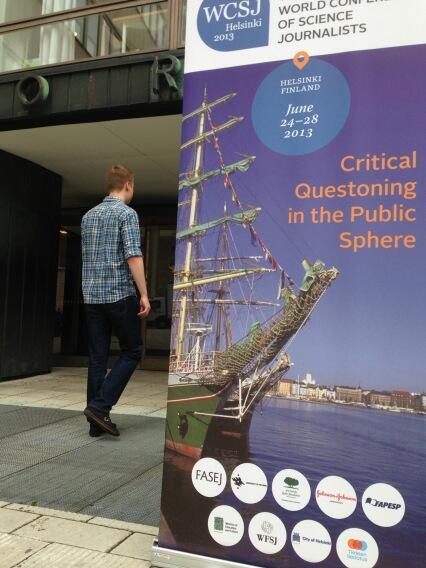 The World Conference of Science Journalists is going on in Helsinki this week, and I was invited to give a talk on science coverage of Indigenous peoples. I sat on a panel with three talented science journalists: David Dickson, Diran Onifade and Veronique Morin, and questions we were grappling with included “Should the media treat Indigenous peoples differently than other social communities because of competing epistemological frameworks? What are the specific sensitivities pertaining to aboriginal peoples when it comes to explaining medical issues from the perspective of modern science?” Here’s a text version of my presentation:
The World Conference of Science Journalists is going on in Helsinki this week, and I was invited to give a talk on science coverage of Indigenous peoples. I sat on a panel with three talented science journalists: David Dickson, Diran Onifade and Veronique Morin, and questions we were grappling with included “Should the media treat Indigenous peoples differently than other social communities because of competing epistemological frameworks? What are the specific sensitivities pertaining to aboriginal peoples when it comes to explaining medical issues from the perspective of modern science?” Here’s a text version of my presentation:
Many of us enter into this profession for a simple reason: we love to tell stories.
But, sometimes it’s tough for a science journalist to uncover a story arc, under layers of complex science. I know — I had to boil the discovery of the Higgs Boson to 2 minutes. Still, the best of us succeed because we are storytellers, and we make science accessible and informative.
Unfortunately, I believe it’s fair for indigenous communities to view us journalists not as storytellers — but storytakers.
There’s a long history of non-Aboriginal people coming to Aboriginal communities, asking about people’s lives, requesting their stories, then they LEAVE. Explorers, anthropologists, missionaries, photographers, historians, medical researchers, artists, and filmmakers, to name a few. Those visitors interpreted what they saw and heard — in books, reports, studies, films, or photos. Aboriginal people had little say in how those stories were told; in many cases, the story never even made it back to them.
The results, when it comes to science journalism, have often been unsatisfactory and sometimes even harmful.
Over and over, we portray indigenous peoples as VICTIMS – disease sufferers plagued by addictions, HIV/AIDS, or diabetes – or EXOTICS – keepers of sacred traditional knowledge, decked out in feathers and facepaint.
The stories of indigenous peoples are more complex and diverse than that, and we as journalists — as seekers of the truth — have a responsibility to do better.
In fact, I teach a course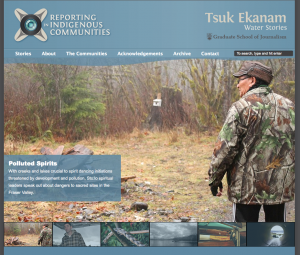 — at the University of British Columbia called Reporting in Indigenous Communities — designed to do just that. Teach up-and-coming journalists how to operate in First Nation communities in Canada so they can tell better stories.
— at the University of British Columbia called Reporting in Indigenous Communities — designed to do just that. Teach up-and-coming journalists how to operate in First Nation communities in Canada so they can tell better stories.
Let me boil my whole course down to two “R”s… that I hope you’ll find helpful:
1) Representation, and
2) Reciprocity.
Let me talk first about representation… and let me tell a little story.
Two of my students wanted to do a story about mental health in First Nation communities. They discovered there had been a rash of youth suicides amongst the Sto:lo peoples. It’s an important news story – the aboriginal suicide rate is five times the national average in Canada, and a leading cause of death amongst aboriginal youth.
They found a victim – Eunice Ned’s son was at-risk for suicide, after her 15-year old nephew had recently shot himself.
The story could have ended there, mixed in with statistics and piles of Health Canada reports, a quote from a white expert, and maybe a chief who blames government for lack of funds.
But I push my students, in every story, to find out if First Nations are part of the solution.
In this case, they are. The community had recently started up a suicide response team, composed of 13 volunteers. The team members shared their stories, and explained why non-aboriginal counselors often don’t get help. And we went further.
We included Dr. Evan Adams in our coverage. He’s a native doctor, and now deputy provincial health officer in BC. He explained research that, in fact, most First Nations communities have very few suicides: 90 per cent of suicides occur in only about 10 per cent of communities.
Overall, I hope our audience learned about a troubling health issue plaguing First Nation communities. But they also would learn not all Indians are at-risk. Not all Indians have mental health problems.
It’s all about representation. Indigenous people are human beings. To paraphrase Terry Glavin, who left a Teaching on our RIIC site, some aboriginal people are heroes. Some are jerks. They are doctors, junkies, hockey fans, mums, and even journalists.
As science journalists, do your best to tell the whole story – not just a portion of it.
But maybe some of you are saying to yourself, ‘My trouble is getting access to the community, so I can tell that story!’ This brings me to a second important lesson for journalists: reciprocity. Here’s another short story.
Two of my students came to me with a great story. How a young Squamish ethnobotanist is trying to bring back the chocolate lily, a traditional bulb plant, in order to combat diabetes in her community.
My students were excited, and so was I. Until they were informed, if they wanted to tell this story, they’d have to conform to OCAP research principles.
OCAP stands for Ownership, Control, Access and Possess, and its set of principles that defines First Nations rights to own, control, access, and possess information or data about their peoples. In a nutshell, it’s about self-determination… and OCAP exists because there’s a sorry legacy of researchers who treat First Nations people as subjects, not partners, and conduct research that wins grants and awards for the researcher but doesn’t do any good for the community.
For those who aren’t familiar with OCAP, you’ve likely heard the phrase “free, prior and informed consent” — from the UN Declaration on Rights of Indigenous Peoples.
“Free, prior, informed consent” is a hard-fought-for principle that mostly deals with indigenous lands, but comes from the same place of historic theft and contemporary distrust as OCAP.
Journalists should particularly take note of Article 11 of UNDRIP:
Article 11. “Indigenous peoples have the right to…maintain, protect and develop the past, present and future manifestations of their cultures, such as archaeological and historical sites…[and] States shall provide redress…with respect to their cultural…property taken without their free, prior and informed consent…”
Now imagine my students, eager young journalists who want to tell an important story about a hardworking ethnobotanist and her passion to treat diabetes. What do they do, when asked to sign a document that requires they seek individual and community consent, provide access to research data, propose “meaningful capacity development” for the First Nation, and give a draft of the article to the First Nation?
Not easy on a deadline. More difficult still, when journalistic independence is considered. We don’t share our research to our sources, prior to broadcast, in case someone tries to put limits on our freedom. We often refrain from community involvement, if there’s a chance our impartiality may be questioned. Those are our principles.
In fact, OCAP and journalism ethics may be fundamentally at odds. However, if you understand and practice RECIPROCITY, you may never encounter a situation where these two sets of principles clash.
Reciprocity is a fundamental value of many Indigenous societies. A hunter asking permission from an animal before a kill, a healer placing tobacco on the earth before picking a plant — these are simple expressions of reciprocity.
And you, as a journalist, can also practice reciprocity.
If you’re filming a ceremony, explain why it’s important to your story and how it will be presented. If you’re only looking for a 10-second clip, or a short quote, explain the conventions of your medium to an elder, before they relate a sixty-minute legend.
Build in extra time to YOUR schedule, to allow for events to be delayed, interviewees to be late, or for the appropriate introductions to be made.
Once the story is published or broadcast, make sure make sure the people you’ve interviewed and the people who assisted you along the way get to see, read, or hear the story. Perhaps offer your story subjects a transcript of interviews or a copy of raw footage.
– Ask not, “How do I get access?”— ask “What am I giving back?”
I could go on and on about improving our reporting in Indigenous communities, but if you’d like to read more, please go to my website, www.riic.ca.
It’s an online guide of tips and tools for working journalists. It focuses on the Canadian experience, but I’ve been told by Saami here in Finland and blackfellas in Australia there’s helpful stuff in there for them too.
Most of all – good luck, when you visit Indigenous communities. Be curious, be respectful, be open and honest. There are so many important stories to tell.
